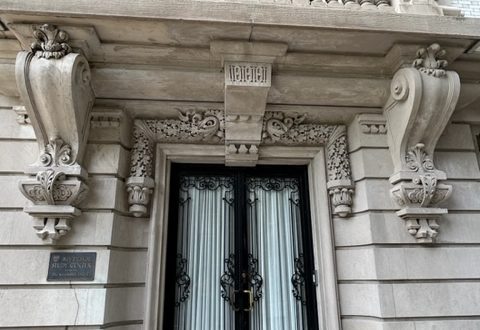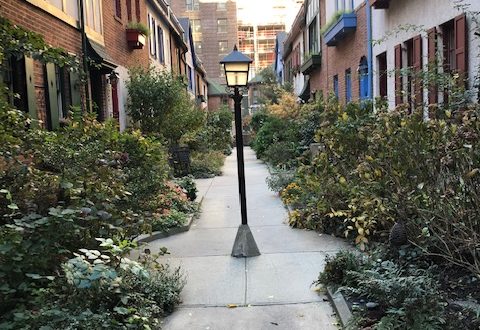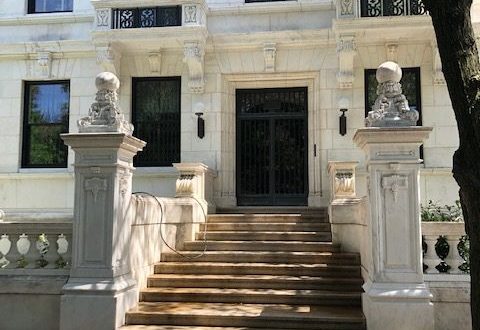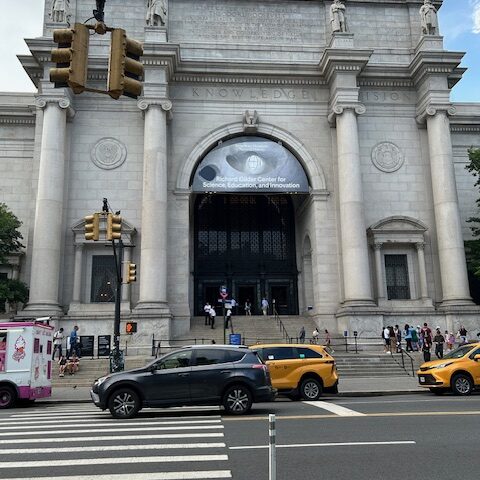
7 Architectual Landmarks on the Upper West Side
The Upper West Side of Manhattan is a showcase of architectural grandeur, blending historic elegance with modern innovation. Its streets are lined with buildings that not only define the skyline but also tell the story of New York’s evolution. Here are seven architectural landmarks that exemplify the neighborhood’s rich heritage and enduring appeal.
1. The Dakota – 1 West 72nd Street
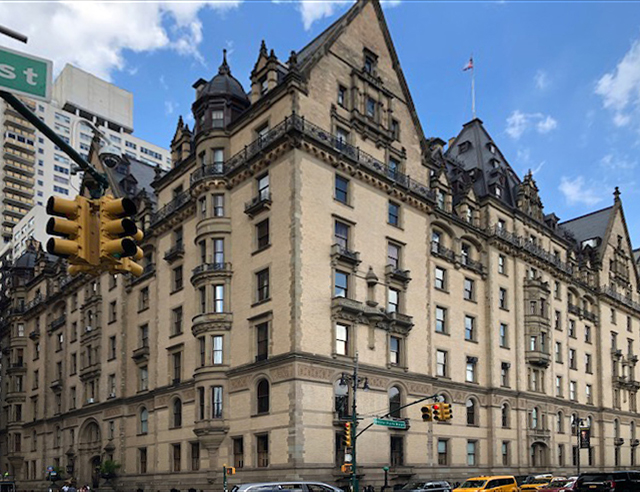
Completed in 1884, The Dakota stands as one of the most iconic residential buildings in New York City. Designed in the Renaissance Revival style, it features ornate gables, dormers, and a distinctive fortress-like appearance. The Dakota’s storied history is matched by its architectural boldness; it was among the first luxury apartment buildings in the city and has housed numerous celebrities, most notably John Lennon. Its design set a precedent for future residential developments on the Upper West Side, with its innovative layout and lavish detailing.
2. The Ansonia – 2109 Broadway
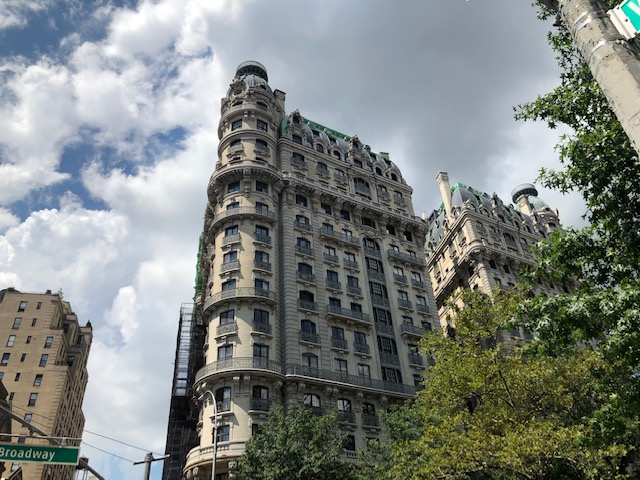
The Ansonia, built between 1899 and 1904, is a masterpiece of Beaux-Arts architecture. Originally conceived as a luxury hotel, it now serves as a condominium. The building’s grand façade, mansard roof, and elaborate balconies epitomize the opulence of the Beaux-Arts style. The Ansonia’s history is as colorful as its architecture, having been home to various celebrities and serving as a backdrop for cultural moments throughout the 20th century. Its exuberant ornamentation and scale make it a standout on Broadway.
3. The Apthorp – 2211 Broadway
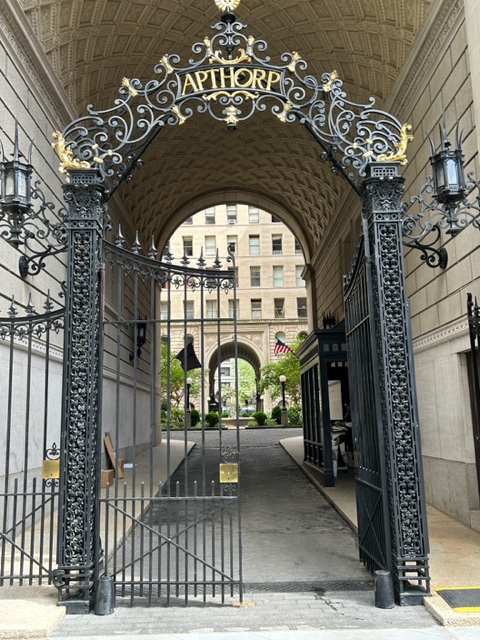
Constructed in 1908, The Apthorp is a premier example of Italian Renaissance Revival architecture. Occupying an entire city block, this residential building is notable for its grand entrance and rare interior courtyard—a true luxury in Manhattan. The Apthorp’s intricate stonework and imposing gates evoke the grandeur of European palaces, reflecting the aspirations of early 20th-century New Yorkers. Its historical significance and architectural beauty continue to draw attention from residents and visitors alike.
4. The San Remo – 145-146 Central Park West

The San Remo, completed in 1930, is a defining presence on Central Park West. Designed by Emery Roth, it was the first twin-towered residential building in the city, introducing an Art Deco flair to the neighborhood. The San Remo’s towers rise majestically above the park, their setbacks and ornamentation exemplifying the transition from classical to modernist design. Over the years, it has attracted a host of notable residents, further cementing its status as an Upper West Side landmark.
5. The Dorilton – 171 W. 71st Street
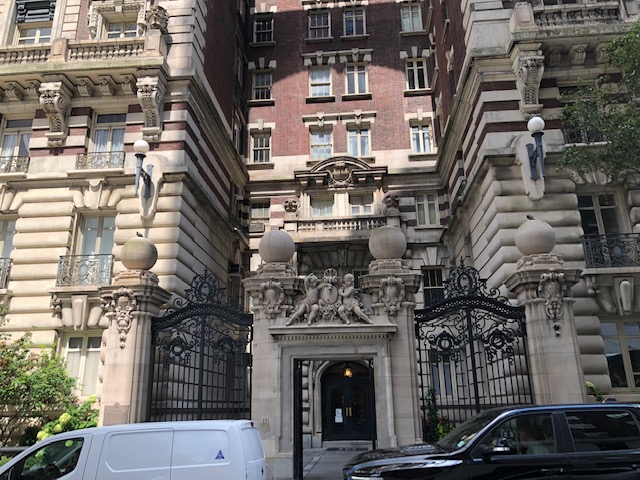
Built in 1902, The Dorilton is celebrated for its Beaux-Arts design. The building’s grand entrance, intricate ironwork, and sculptural details make it one of the most visually striking structures in the area. The Dorilton’s bold style and dramatic presence reflect the spirit of early 20th-century New York, when architectural experimentation flourished on the Upper West Side. Its preservation underscores the neighborhood’s commitment to honoring its architectural heritage.
6. American Museum of Natural History – 200 Central Park West
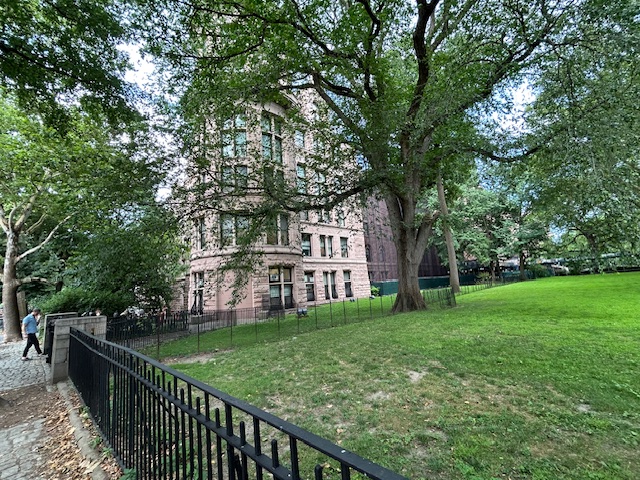
Beyond its role as a world-renowned scientific institution, the American Museum of Natural History is an architectural marvel. Its impressive façade and expansive interior house a vast array of exhibits, while the building itself reflects the Beaux-Arts and Romanesque Revival styles. The museum’s architecture embodies its mission of education and exploration, offering visitors an immersive journey through natural history and science. The adjacent Hayden Planetarium adds a modern touch to the historic complex.
7. Beacon Theatre – 2124 Broadway
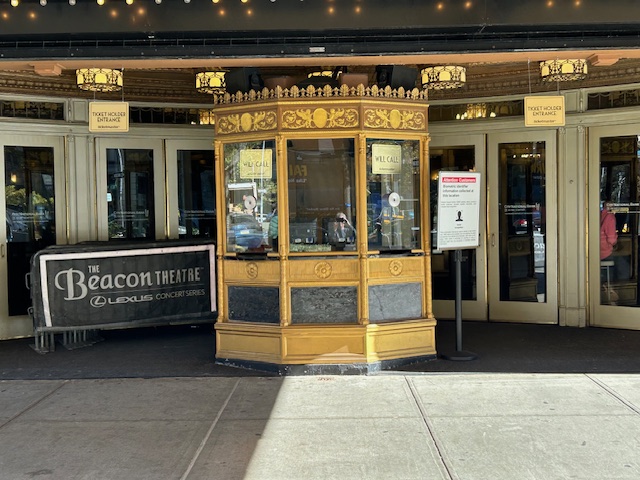
Stands as a dazzling example of early 20th-century movie palace architecture and a vibrant cultural landmark on the Upper West Side. Designed by Walter W. Ahlschlager and opened in 1929, the Beacon was originally envisioned as a lavish silent film showplace but quickly adapted to the era of sound films. Its Art Deco exterior is understated, but the interior is a spectacle of opulence, blending Renaissance, Greek, Roman, and Rococo influences.
The theatre’s grand auditorium features white marble floors, original bronze doors, and hand-painted murals by Danish artist Valdemar Kjoldgaard. The most dramatic element is the proscenium arch, guarded by two towering Greek goddess statues, while the multicolored ceiling is crowned by a massive Venetian-style chandelier. The eclectic interior includes Persian frescoes, Egyptian sphinxes, Roman shields and helmets, and a riot of gilded ornamentation—creating an atmosphere described as “a true bit of Bagdad on Broadway”.
With seating for nearly 2,900, the Beacon Theatre has hosted everything from movie premieres to legendary concerts and Tony Awards ceremonies. Its acoustics, originally designed for live music accompaniment, are considered nearly flawless. Designated a New York City interior landmark and listed on the National Register of Historic Places.
Conclusion
The Upper West Side’s architectural landmarks are more than just beautiful buildings—they are living symbols of New York City’s history, creativity, and resilience. From the stately elegance of The Dakota and The Apthorp to the theatrical grandeur of the Beacon Theatre, these structures embody the neighborhood’s unique blend of tradition and transformation. Exploring these landmarks offers a journey through time and a deeper appreciation for the artistry and ambition that continue to shape the Upper West Side. Whether you are a resident, a visitor, or an architecture enthusiast, these seven landmarks stand as enduring testaments to the spirit of New York.



